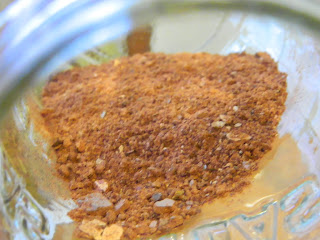The sight of a majestic Ponderosa Pine (Pinus ponderosa), with its graceful needles and distinctive bark makes my heart soar. I'm originally from Sweden and I had not met Ponderosa Pine until I moved to the Okanagan, BC. Its particular vanilla-like scent on a hot summer's day is now forever imprinted in my mind as the quintessential smell of the Okanagan. Not only is ponderosa pine beautiful, but it also has many other cool attributes. For instance, it can handle moderate fires. The bark is thick enough that it comes to little or no harm if a fire rages through. It also loses some of its lower branches as it ages and this protects the crown from ground fires. Historically, ponderosa pine tree communities tended to experience low intensity fires at regular intervals without coming to harm. Here on the farm, the ponderosa pine shares its habitat with western red cedar (Thuja plicata), which is a bit unusual. Usually ponderosa pines grow in areas with lower rainfall and often co-exist with another drought tolerant conifer, the Douglas fir (Pseudotsuga menziesii).
I like using the outer bark of the ponderosa pine to make crackers with. This recipe is inspired by a Sami recipe shared by Laila Spik. Laila Spik is a Sami elder from northern Sweden and she is an avid champion for Sami culture. Her recipe uses Scots pine (Pinus sylvestris). I found the recipe in The Boreal Herbal: Wild Food and Medicine Plants of the North by Beverley Gray. This is an excellent book on wild-crafting in northern North America. I modified the recipe to be used with ponderosa pine. The good thing about using the outer bark as opposed to the inner bark is that it's relatively harmless to the tree. Ponderosa pine has thick, almost puzzle-like outer bark. I break off a few of these "puzzle pieces" from a few trees until I have a container full. Make sure you don't harvest too much from any one tree. I break the pieces up by hand, as small as I can get them. I roast them in the oven for 35 min at 350 degrees Farhenheit. It smells wonderful. Once that is done I grind them to a fine flour with a coffee grinder, (a grain mill would work even better, I think). I then sift the flour to remove any hard bits. With those preparations done, it's time to combine the ingredients and get baking!
Flour from outer bark before strained through sieve to remove hard bits
Ponderosa Pinebark Crackers/Knäckebröd
3/4 cups pine bark flour
3 cups whole wheat flour
1 tsp salt
1,5 cups cold water
Pre-heat oven to 350 degrees Fahrenheit. Mix all ingredients together. Roll out very thin. Prick with fork. Cut into cracker squares and place on greased oven tray. Bake 3 minutes (swap your trays halfway through- top to bottom, bottom to top). They will harden as they dry. The crackers have a very unique flavour. I adore it, but some people find it too aromatic. They taste great with creme cheese or hard cheese.
For a lovely beverage to go with your crackers, why not make ponerosa pine needle tea? This is a drink that is invigorating, refreshing and full of vitamin C. The needles also freshens your breath.
If you want to get really into the ponderosa pine theme you could even serve your crackers in a basket woven with ponderosa pine needles. The Secwepemc make beautiful baskets with coils of the needles and coloured string. I have never made a basket, but I have tried the technique to make Christmas tree ornaments.
Thank you for all your gifts Ponderosa Pine!









